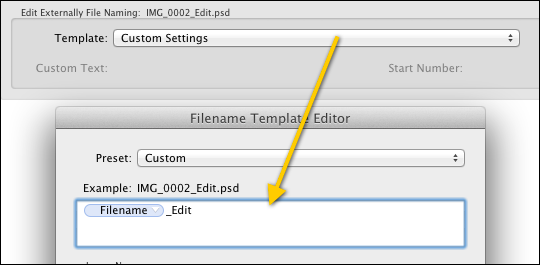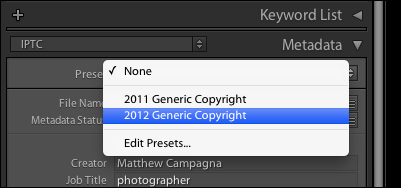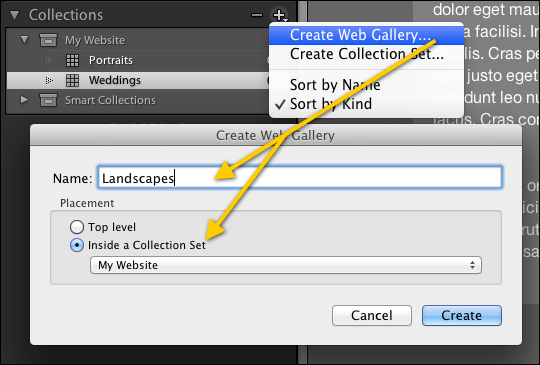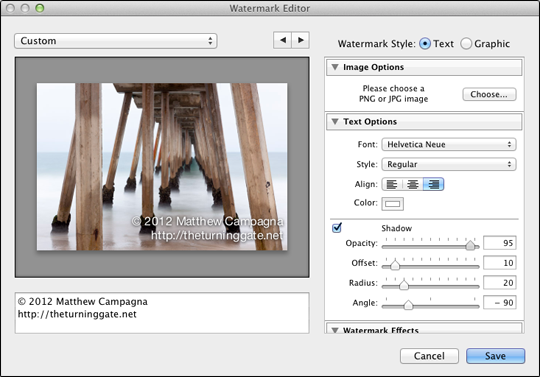As a photographer in the modern era, the Web is your best means of having your work seen and thereby growing your audience. Lightroom provides various means of publishing your work to the Web, either using the Web module to roll your own galleries or using Publish Services to upload your work to online services like Flickr and Facebook. These tools are easy enough to use, but the Web is a wild, rambling place, and there is a difference between using the tools and using them well.
Output for Web is usually the final step in a Lightroom-to-Web workflow; it comes after organizing your images, tagging your images, processing your images … but it’s something you should be thinking about all the way through the process. As in anything, intent makes for a stronger impact; it pays to be thinking about and making provisions for Web output from the start of your photographic workflow.
The Web can read, but cannot see
Before working on our images, it helps to understand the nature of images on the Web. It’s this understanding which will fuel much of our workflow.
It’s often said, “A picture is worth a thousand words.” On the Web, that’s just not true. The Web is based almost entirely on textual content, and that puts photographers at an immediate disadvantage. Photography is a visual medium, not a textual one, leaving search engines and other underlying Web technologies with no way of interpreting your images. We can overcome this by pairing our images with words, and an image online is worth only as many words as you can give it.
… it pays to be thinking about and making provisions for Web output from the start of your photographic workflow.
Many social photo sites allow you to tag, title and caption your images within their database, associating keywords and textual context to your image to represent its visual content. On your own website, you’ll want to leverage image file names, HTML alt and title attributes, and page context as means of bolstering your images’ presence with keywords and descriptions.
Your Library and the Web
All workflows begin in the Library, and there is much can be done in your Library to better prepare your images to lead productive lives online. File names, metadata, collections all have their part to play and we’ll tackle each in turn. So, wherever you are in Lightroom, press G now to return to the Library’s Grid view.
File naming for Web
File names provide the most direct connection by which to associate text with your images. First and foremost, always rename your images. The worst thing you can do is publish your images with their default file names from the camera; if you don’t believe me, do a Google image search for “img_0001.jpg” and just see what you get.
Beyond the simple importance of renaming your images, it’s good to establish convention for consistent file naming throughout your image library, and it’s also important that you take Web publishing into account when establishing this convention. A few tips for file naming best practices follow.
Ideally, we should like that the file names of our images online are a match to the image file names in our Lightroom library. To that end, we should avoid using spaces or punctuation in file names, as these things do not translate well to the Web. The only safe exception to this rule is the underscore (_), which is a Web-safe character for file and folder names. It also makes an excellent substitute for spaces.
Hyphens (-) are also frequently used online, but should be used with caution. There are circumstances within Lightroom in which hyphens may be replaced by underscores during export, such as when exporting from the Web module in Lightroom 2 and 3. In Lightroom 4, the Web module honors hyphens in file names. Nonetheless, hyphens are less a sure thing than underscores, so you may wish to play it safe and avoid them.
You can easily setup character replacement in Lightroom’s Preferences. Under the File Handling tab, setup your File Name Generation with the following rules:

Under the External Editing tab, we also need to change the -Edit tag that gets added to files edited in external applications like Photoshop; we’ll have Lightroom use an underscore instead of a hyphen:

When including dates in file names, it’s best to render dates in the format YYYYMMDD. This format rids us of extraneous separators, helping to keep file names short, and presents the date in a format which allows computers to order files in proper chronological sequence.
Do not begin file names with numbers. Many image galleries will use your file names as HTML id or class values within the gallery source code. When id or class attributes begin with numbers, they are considered to be invalid, which can damage search ranking and may have other ill effects on your page or gallery. This can present a problem, though, when you wish to name your files by date for chronological ordering. I will present a solution shortly.
Always include descriptive keywords in your file names, as the file name is the most direct way of associating keywords to your images. Just don’t go overboard; try to limit yourself to two or three important keywords, broadest keyword first, most specific keyword last.
Use four-digit sequential numbering for images from a shoot. Why four? If you’re shooting a wedding, good odds you’re going to shoot more than 999 images and less than 9,999 images. And we want to avoid situations where sequential numbering would give us 1, 11, 12, 2, 22, 23 … What we want is 0001, 0002, … 0011, 0012, … 0022, 00023, etc.
My own naming convention takes all of these rules into account, and looks something like this:
[ My Initials ]_[ Date ]_[ Keywords ]_[ Sequence # ].jpg
So, a photograph from Venice, Italy, captured April 30, 2012 might end up as:
mc_20120430_Italy_Venice_0001.jpg
Because my initials are unlikely to change, beginning file names with my initials identifies me as the photographer, prevents file names beginning with numbers, and still allows me to sort my images by date. Keeping the broadest keyword first ensures that related images will sort in a way that makes good sense.
This is a file naming scheme that serves me within my Lightroom library, when browsing files on my hard drive, and when my images go to the Web. I am able to identify an image by glancing at the file name, and search engines are able to associate textual identifiers to the image. In a studio setting with multiple photographers, images will always glom together by the photographers’ initials, making it easy to determine who shot which image, even when combining images from multiple shooters for a single job.
Within Lightroom’s Library, select any files you wish to rename, then press F2 to bring up the renaming dialogue. You can design and save a naming present for regular use, like this one:

Metadata
Image metadata plays numerous roles online, all of them important.
Images should always be exported with full metadata intact; this will add a few bytes to your image file size, but the size increase is negligible while the benefits are huge.
On export from Lightroom, image metadata gets baked into your image file. Wherever that image goes from there — to your website, to Flickr, to Facebook, to the desktop of an unauthorized downloader — the metadata will identify you as the owner of that image, will provide a connection back to you and/or your website, will designate copyright and licensing status for the image, and so on. Anyone who looks at the metadata will know who you are, how to get in touch with you, and what needs be done if they should wish to license that image for legitimate commercial use.
When uploading images to blogs, the blogging platform will often transfer metadata into the image’s database entry for use. WordPress, for example, is capable of reading images’ captions and titles. Likewise, this information is often read and used by social networking sites like Flickr.
Many other types of web applications are also capable of extracting metadata from image files for use in identifying your images or rendering them onscreen.
Finally, when using Lightroom’s Web module, the Image Info control pane allows metadata to be pulled from each image in your gallery and then displayed on the page as image title or caption, or may embed that information into the image’s alt or title attributes for use by search engines and various devices.
All told, it’s hugely beneficial to provide a full range of metadata for every image you publish online, and Lightroom’s Library module makes it a snap to apply that metadata to your images on the front-end of your workflow.
Save time by designing a metadata preset containing your copyright and contact information; apply the preset to all images on capture or import:

Do be wary, however, of what information you put into your metadata. For example, if you do not wish your telephone number or home address to be accessible to public eyes, you should omit this information from your image metadata. An email or web address is usually sufficient for public contact information.
Using Collections and Output Creations
Lightroom’s Collections panel is an excellent way to organize images for your website. There are a number of ways you can integrate the Collections panel into your workflow, but this is how I like to do it when using the Web module.
I keep an empty folder in my Library, as this allows me to navigate Lightroom quickly, without any images selected; having no images selected means that modules load faster, as they don’t attempt to render images on entry. I typically front my empty folder with zeroes so that it always floats to the top of my folder list, making it easy to find and keeping it out of the way.

With my empty folder selected, I move to the Web module.
Within the Web module, I select a web engine for use from the Layout Style list on the left side of the screen. Lightroom will load the engine, then render the Web preview without images.
At this point, I may wish to customize my gallery’s colors or layout. The process of customizing the gallery goes much faster when there are no images to load. When finished, I save a template to the Template Browser; this allows me to recall my customizations for later use and application to different collections of images.
In the Collections panel, I press the ‘+‘ button and choose Create Collection Set. I name the set “My Website”.

I press the ‘+‘ button again, and this time choose Create Web Gallery. I create a gallery for each gallery I wish to appear on my website: Portraits, Landscapes, Weddings, etc. I assign these galleries to the My Website collection set. Each gallery will be created with 0 images assigned.

I then navigate back to my Library by pressing G for the grid view and begin to populate my newly created collections with images by dragging images from my grid to each collection.
Now, when I return to the Web module and select one of my collections, my gallery settings saved with the collection will be recalled and loaded into the preview along with any images now contained within the collection. I may continue to customize each of my galleries with titles, descriptions, etc. or I can export them to publish. If I later wish to update my gallery with new images, I simply add those images to the collection, return to the Web module and export a new copy of the gallery to replace the old.
Watermarking
Photographers employ many methods to protect their images online, but most of those methods are ineffective. From the perspective of standards-compliant web-design, disabling the browser’s context menu to prevent image saving is ill-advised; otherwise, it’s like wearing a bikini to prevent sunburn — skimpy protection at best.
Covering images with transparent GIF images is also easily defeated, and severely restricts your options for the presentation of images, as it necessitates a very specific page design.
Embedding metadata into your images is definitely helpful, but not everyone looks at metadata, and metadata may easily be stripped from images by anyone who makes the effort.
The most reliable and secure method of protecting your images online is to watermark them, and the only way to defeat a watermark is to irrecoverably damage the image by cropping it or retouching the watermark out of the picture (which, depending upon the size and placement of the watermark, is often impossible).
Effective watermarks not only identify you as a photographer, but also provide an avenue back to your business. A bad watermark might be:
© 2012 Matthew Campagna
I know for a fact that I am not the world’s only Matthew Campagna, and so this watermark does little to help people find me if they want to get in touch, or if they want to report to me the illegitimate use of my image someplace. A more effective watermark might be:
© 2012 Matthew Campagna, http://theturninggate.net
Not only does the onlooker know my name, but they also know where and how to get in touch with me. It’s the contact information that is most important in my watermark, and so it’s also important that my watermark be legible.
Lightroom 3 and 4 provide excellent tools for watermarking images on export from the Library or from the Web module, allowing you to apply text-based watermarks on-the-fly or graphical watermarks designed in Photoshop or similar graphics applications.

Extend Lightroom with Plugins
Finally, powerful as Lightroom may be, there are many third-party plugins available to make it more powerful still.
For those wanting to use Lightroom’s Publish Services, check out Jeffrey Friedl’s export and publish plugins, and check in with your favorite photo hosting services to see whether they provide or can recommend tie-in plugins for Lightroom.
Visit Adobe Lightroom for additional possibilities.
Coda
And that’s a high-level view of a Lightroom-to-Web workflow, the tools Lightroom puts at your finger tips, and some of the best ways to use those tools. To sum it all up, your workflow should look something like this:
- On capture and/or import, name your files according to good convention and apply metadata presets.
- Flesh out your metadata with titles, captions, and other information not filled in by your preset.
- Process your images using the Develop module, geotag your images in the Map module.
- Whatever images you wish to publish to the Web, organize them into collections for output.
- On export, apply your watermark to each image as a means to protect your work from unauthorized use or claim of ownership.
- Always export your images with full metadata intact unless you have good reason to do otherwise.
Most of all, have fun publishing your images to the Web, getting them out there for all the world to see.


